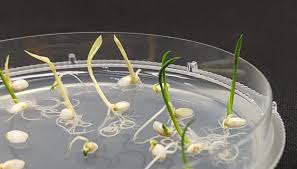Genome Editing- ISDra2TnpB:

A recent breakthrough in plant genome editing comes from a collaborative effort between the ICAR-National Rice Research Institute in Cuttack, India, and Pennsylvania State University, USA.
- Genome editing is a powerful tool that allows scientists to make precise changes to the Deoxy-Ribonucleic Acid (DNA) sequence of living organisms.
- This technology has vast applications in agriculture, where it can be used to enhance crop yields, improve resistance to pests and diseases, and introduce desirable traits like drought tolerance.
- The most commonly known genome-editing tool is CRISPR, which has revolutionised genetic research due to its precision and efficiency.
- CRISPR technology, particularly using proteins like Cas9 and Cas12, has been widely used in genome editing.
- These proteins work by cutting DNA at specific locations, allowing scientists to remove, add, or replace genetic material.
- However, a major limitation in plant genome editing has been the size of these proteins, which are often too large to be efficiently accommodated by plant cells.
- This has created a need for smaller, more efficient genome-editing tools that can work effectively in plant systems.
- The ISDra2TnpB genome editor have developed a new genome-editing tool called ISDra2TnpB, derived from the bacteria Deinococcus radiodurans.
- This tool is significantly smaller than the traditional CRISPR-associated proteins like Cas9 and Cas12, making it more suitable for use in plant cells.




